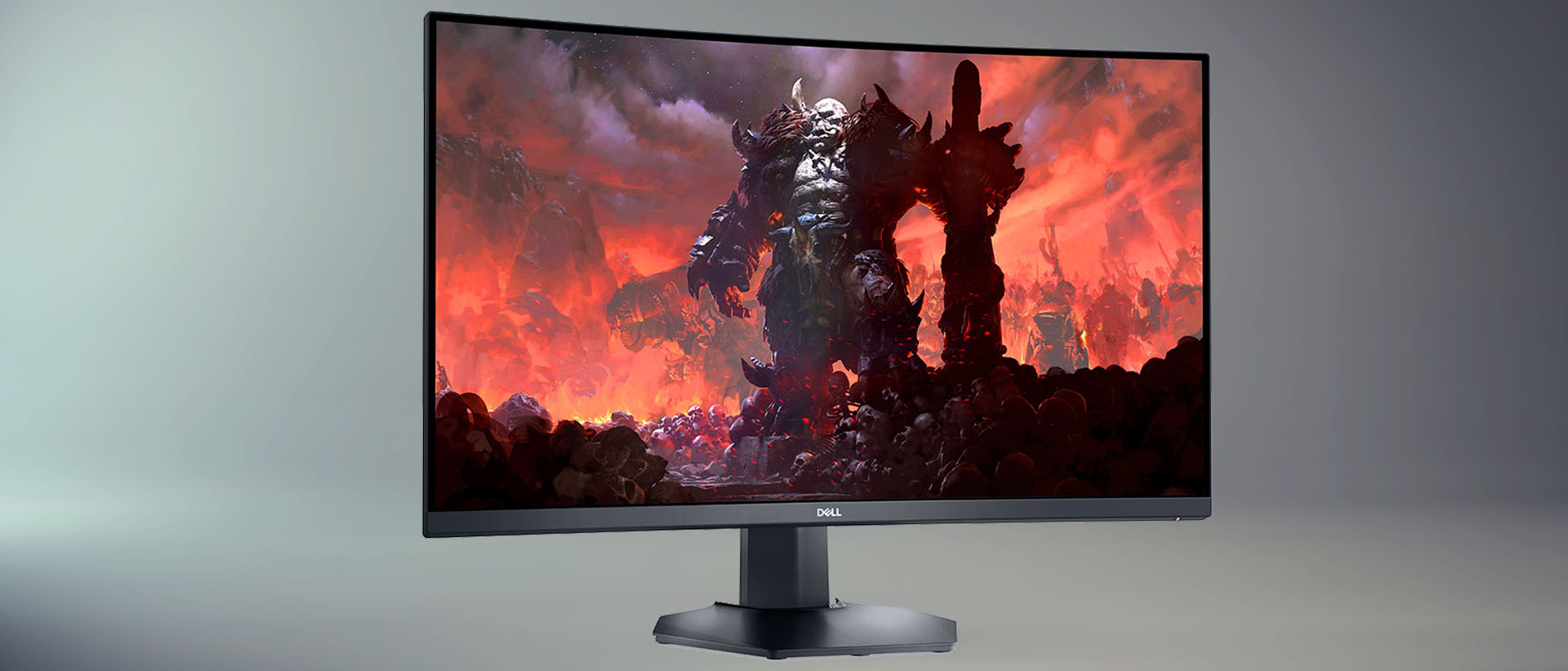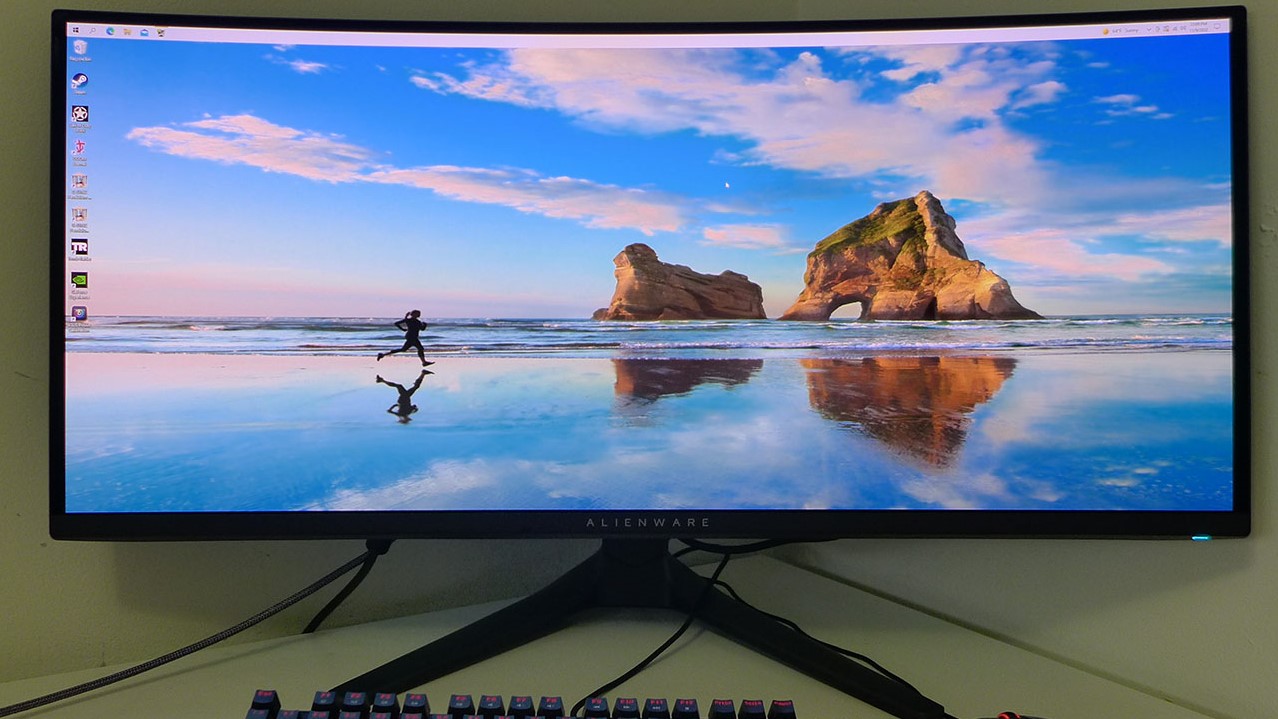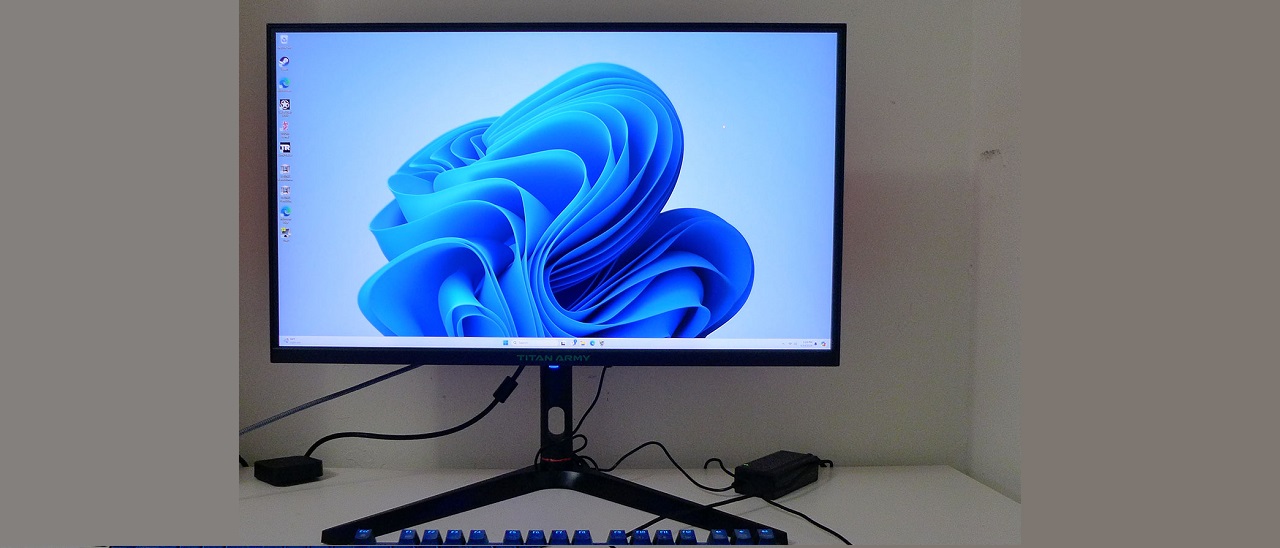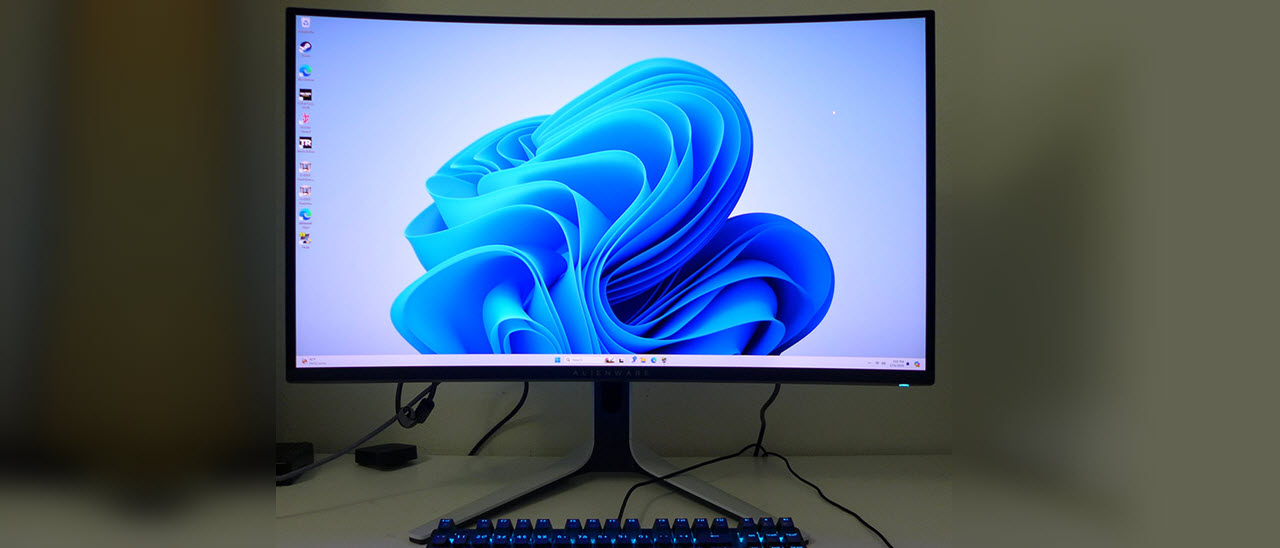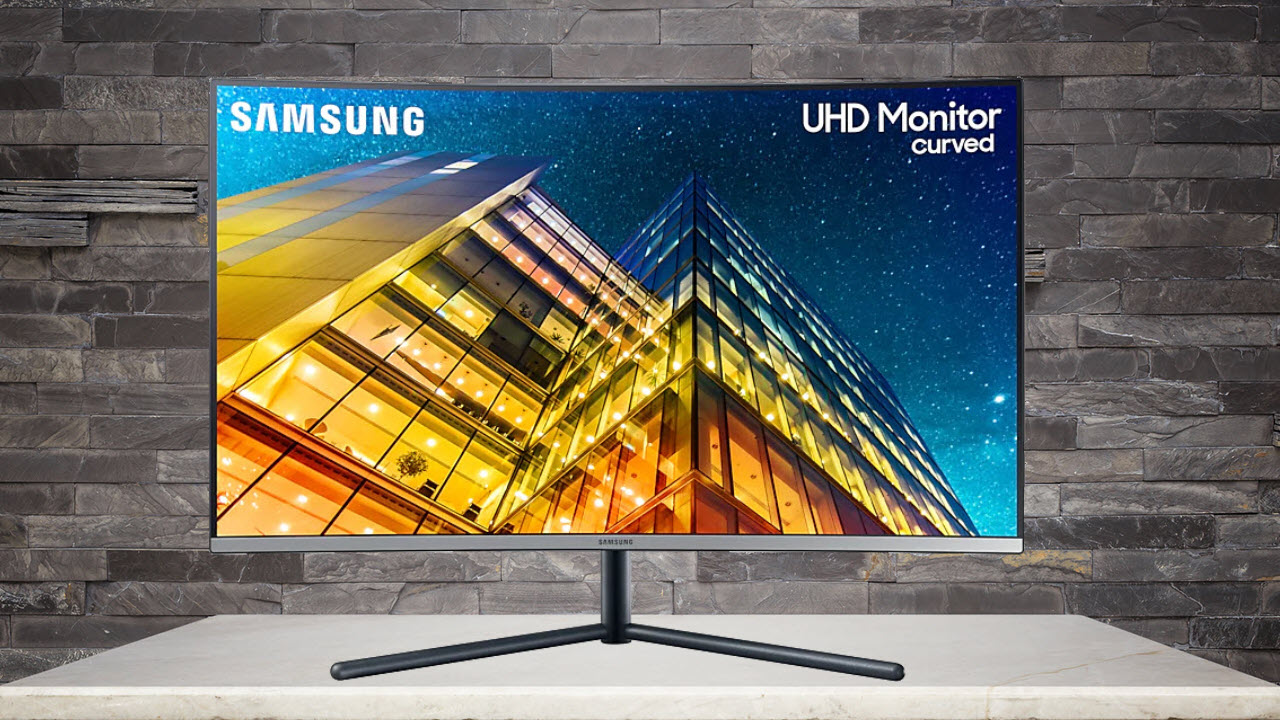Best Computer Monitors 2025
Upgrade your setup and give your eyes a treat with one of the best computer monitors.
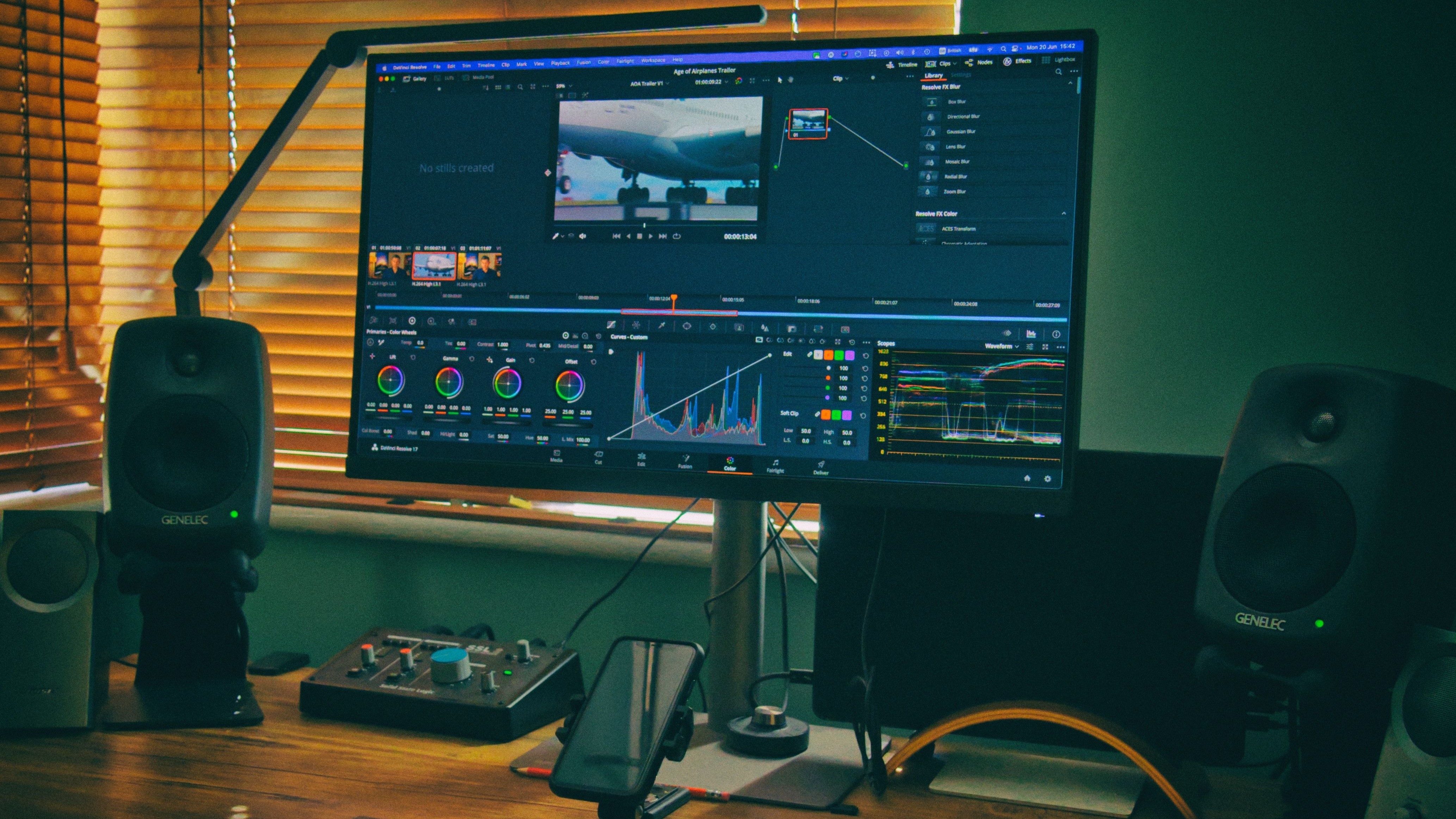
The list in brief
1. Best Overall
2. For Gaming
3. Best Ultrawide
4. Best Curved
5. Best Budget
6. For 4K Gaming
7. Best 4K Budget
8. Best Portable
9. Shopping Tips
Working from home has become the new normal for many people, so finding the best computer monitor is more important than ever. After all, you surely want to see the best visual quality from your coworkers' best webcams. While many PC components are still enduring depressing shortages, performing a screen upgrade is one of the most accessible and impactful changes you can make to your gaming rig.
Below, we list the best computer monitors across various categories, from gaming to budget 4K and HDR.
The Quick List
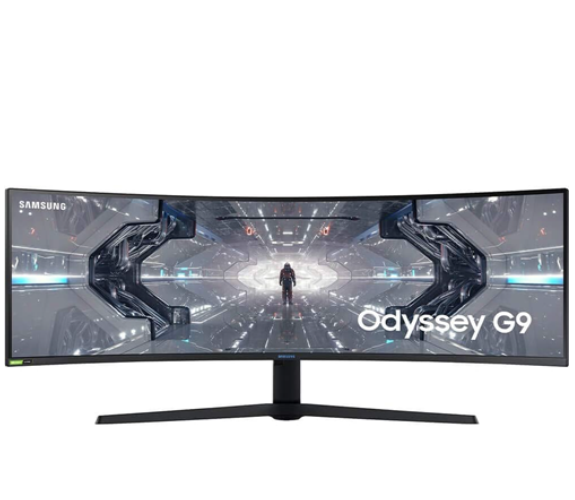
Best Computer Monitor
The Samsung Odyssey G9 features a 49-inch VA panel with a 5120 x 1440 resolution. The panel comes with a tight curve and even manages to still hit 240Hz while delivering an accurate picture.
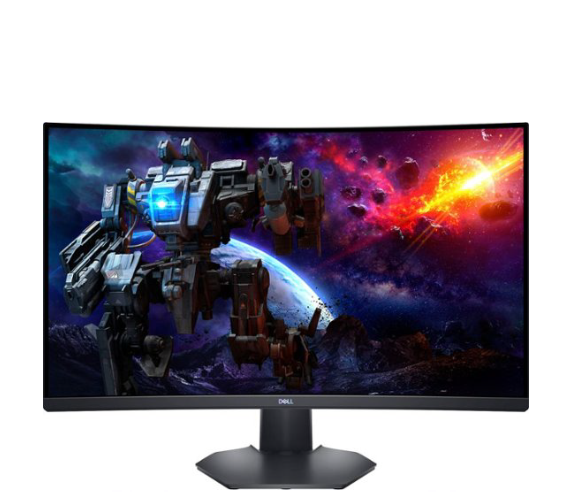
Best Computer Monitor for Gaming
The Dell S3222DGM is a true standout in the gaming monitor category, delivering excellent performance and a large panel at a reasonable price. The QHD VA panel boasts a refresh rate of up to 165Hz and contrast is dialed in at over 4,200:1.
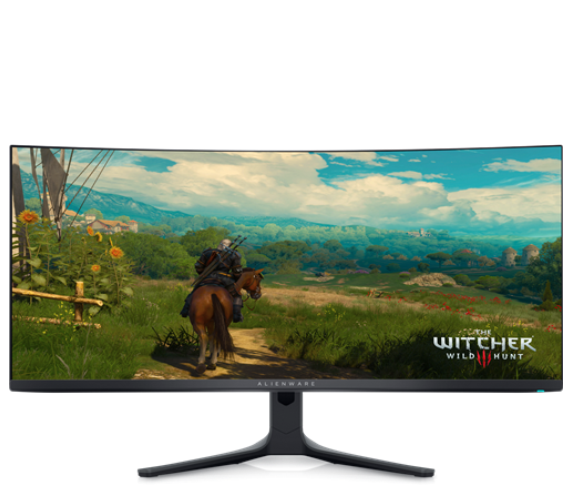
Best Ultrawide Computer Monitor
This ultrawide brings a QD-OLED panel to the table, complete with a large color gamut. GIven that this is an ultrawide monitor, you'll find a WQHD resolution with a refresh rate that's capped at 165 Hz refresh rate.

Best Curved Computer Monitor
The Samsung Odyssey Neo G8 is the performance enthusiast’s monitor of choice thanks to its 4K resolution, tight 1000R curve, and fast 240Hz refresh rate. Measuring 32 inches across, the Odyssey Neo G8 also uses a Quantum Dot film to boost its contrast ratio far above traditional VA-backed monitors.
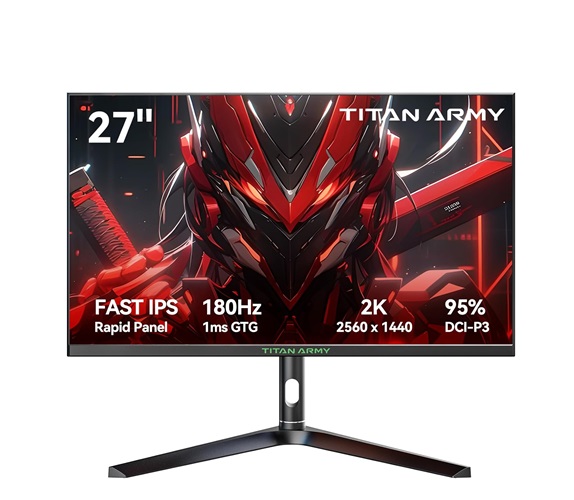
Best Budget Gaming Monitor
The Titan Army P27A2R is a budget gaming monitor that nails the basics. It offers a QHD resolution IPS panel that is both accurate and colorful and won’t break the piggy bank thanks to its sub-$200 street price.
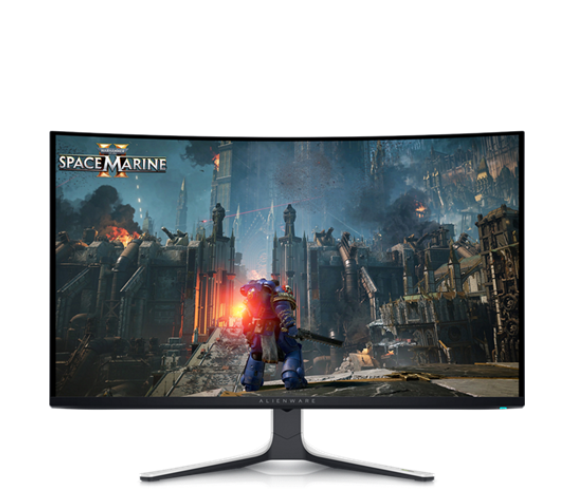
Best Computer Monitor for 4K Gaming
With a 240Hz refresh rate, 4K resolution, Dolby Vision support, and a 32-inch QD-OLED panel, the Alienware AW3225QF is a perfect companion for your console gaming experience. Not only do you get the inky blacks and brilliant colors that you expect from OLED panels, but it also offers a large color gamut. It also offers an externally accurate picture and excellent build quality that comes with the Alienware name.
Show More ⬇
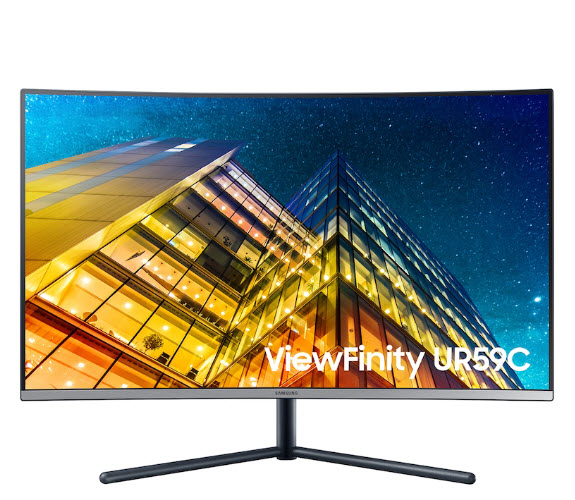
Best Budget 4K Computer Monitor
The Samsung UR59C is a great all-around performer with a 32-inch VA panel capable of hitting nearly 3,000 nits. It offers excellent colors (once calibrated) and delivers sharp text for productivity-focused individuals. WIth a street price of under $400, it earns an easy recommendation.
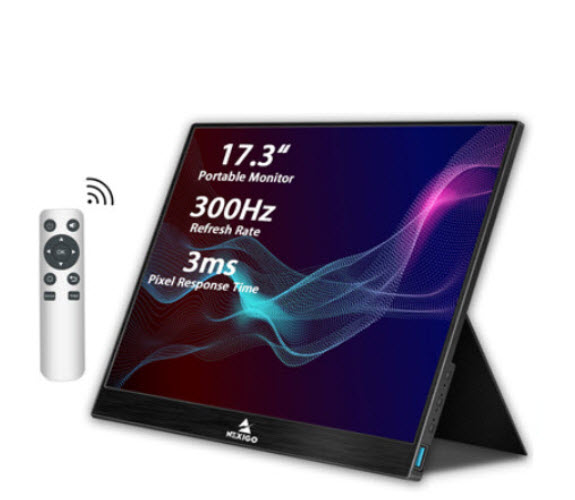
Best Portable Computer Monitor
High-refresh rate panels aren’t just limited to desktop gaming monitors. Nexigo’s NG17FGQ delivers hits 300Hz refresh rate using a USB-C cable, while the 1080p IPS panel comes in at 17 inches across.
The Best Computer Monitors You Can Buy Today
Why you can trust Tom's Hardware
Best Computer Monitor
Specifications
Reasons to buy
Reasons to avoid
The Samsung Odyssey G9 is an absolute beast of a monitor, measuring a staggering 49 inches across. To help make viewing content more immersive, you'll find a 1000R curve, which is among the tightest currently found on a gaming monitor. You can think of the Odyssey as having two 27-inch 1440p displays melded into one sitting on your desk. Speaking of your desk, you'll need a mammoth footprint to accommodate the Odyssey G9.
Our testing showed that the Odyssey G9 delivered superior contrast (2,152.9:1 following calibration) and hit 58,881.7:1 regarding HDR testing.
However, not everything is roses with the Odyssey G9. It doesn't offer blur reduction, a framerate counter, or speakers. However, we can overlook those admissions given the excellent image quality and speed offered by this ultrawide monitor.
Read: Samsung 49-Inch Odyssey G9 Review
Best Computer Monitor for Gaming
2. Dell S3222DGM
Our expert review:
Specifications
Reasons to buy
Reasons to avoid
The Dell S3222DGM is the best gaming monitor for many gamers. This follow-up to the highly-rated S3220DGF boasts a 32-inch VA panel, QHD resolution, and 165 Hz refresh rate with Adaptive-Sync support. Other perks in its favor are 85 percent coverage of DCI-P3 and a display curve with an 1800mm radius.
However, Dell knocks it out of the park with the S3222DGM's contrast ratio. VA panels are known for their excellent contrast, but the S3222DGM is rated at an impressive 3,000:1, easily blowing away IPS competitors. But our sample managed to better that figure by a third, coming in at 4,000:1 in instrumented tests.
This 32-inch monitor offers plenty of vertical screen real estate without the need for scrolling and 1440p resolution, the current sweet spot between image quality and gaming performance. And while the S3222DGM is targeted primarily at gamers, we found that it is also great for general productivity and anything in between.
While the S3222DGM lacks HDR support, its excellent contrast doesn't detract from that missing "bullet point" and its overall performance is hard to beat at this price point. Throw in Dell's usual solid build quality, and this represents a great monitor for enthusiasts looking to build out a mid to high-budget gaming PC.
More: Dell S3222DGM review
Best Ultrawide Computer Monitor
Specifications
Reasons to buy
Reasons to avoid
Desktop-class OLEDs are becoming more prevalent in gaming monitors, and one of the leaders in this space is the Alienware AW3423DFW.
This 34-inch ultra-wide monitor features an 1800R curve with a resolution of 3440 x 1440. The standout feature, however, is the Quantum Dot OLED (QD-OLED) panel that offers a wide color gamut and inky blacks that gamers crave.
Other plusses here include great color saturation, premium build quality, excellent video processing, and calibration that is dialed in straight out of the box.
The $1,100 price tag is not for the faint of heart, but the AW3423DFW's performance makes it well worth the price of admission.
Read: Alienware AW3423DW Gaming Monitor Review
Best Curved Computer Monitor
Specifications
Reasons to buy
Reasons to avoid
It’s hard to be all things to all people, but the Samsung Odyssey Neo G8 tries its best. It uses a 32-inch VA panel that combines Mini LED lighting (1,196 dimming zones) and a Quantum Dot film to deliver greater contrast than what’s available on traditional VA monitors (25,000:1 in our testing compared to 3,000:1 typically found in VA panels).
Samsung also infused the Odyssey Neo G8 with a tight 1000R curve and a fast 240Hz refresh, which is a rarity at this 4K (3840 x 2160) resolution. Whether looking at SDR or HDR content, the Odyssey Neo G8 impresses with accurate color, and overall gaming performance is excellent.
While we would have liked a bit more color volume from the Odyssey Neo G8, it provides a lot of bang for the buck at its $1,499 MSRP. However, the monitor is often on sale, taking its price below $1,200.
Read: Samsung Odyssey Neo G8 Review
Best Budget Gaming Monitor
Specifications
Reasons to buy
Reasons to avoid
You don’t have to spend a boatload of money to get a good monitor these days. While you can definitely spend upwards of $1,000 or more to jump on the OLED bandwagon, gamers with more meager budgets can still find good IPS panels for sub-$200.
One such offering comes from a brand that until recently was unfamiliar to us: Titan Army. Titan Army’s P27A2R features a 27-inch IPS panel with a QHD resolution (2560 x 1440) and a 180 Hz refresh rate. The panel's maximum brightness is 300 nits, and its maximum contrast ratio is 1,000:1 (which is about average for an IPS panel).
As you would expect from a gaming monitor that needs to cater to a vast swath of the gaming populous, it supports both AMD FreeSync and Nvidia G-Sync technologies. On the connectivity front, you'll find two HDMI 2.1 ports and two DisplayPort 1.4 ports. Although you'll find a 3.5mm headphone jack, there are no built-in speakers.
When it comes to actual performance, the P27A2R is accurate straight from the factory, with colorful images and good contrast (for an IPS panel). The onboard video processing is also excellent at 180 Hz, and gamers will find low input lag. With an MSRP of $199.99, the P27A2R offers tremendous value for gamers looking to adhere to a strict budget.
Read: Titan Army P27A2R Review
Best Computer Monitor for 4K Gaming
Specifications
Reasons to buy
Reasons to avoid
The Alienware AW3225QF ticks all the right boxes for anyone looking for a large monitor to pair with a PC or a current-generation console. It measures 32 inches across, has a 4K resolution, and its refresh rate tops out at 240 Hz. Best of all, it uses a QD-OLED panel to give you unmatched contrast and luscious colors.
The monitor even supports Dolby Vision, which makes it a perfect fit for the Xbox Series X. The AW3225QF does so many things well, but it’s not perfect. However, it is near the top of its class in most categories and does so with excellent motion resolution and low input lag. Throw in the fabulous build quality that we expect from Alienware, and you have a monitor that is equally adept at handling any of your gaming needs; well, that is if you don't mind the $1,200 price of entry.
Read: Alienware AW3225QF Review
Best Budget 4K Computer Monitor
7. Samsung UR59C
Our expert review:
Specifications
Reasons to buy
Reasons to avoid
The Samsung UR59C is a budget champion, delivering 4K resolution from its VA panel and a contrast of 2590.5:1 after calibration). Samsung isn't positioning the UR59C as a high-end gaming monitor, so you're limited to a 60Hz refresh rate and there are no provisions for FreeSync or G-Sync.
If you frequently multitask with multiple windows open, you'll appreciate the 1500R curve that keeps content closer to your line of sight. The UR59C came out of the box with some nasty color errors, but our calibration settings managed to reduce the error from 4.3dE to 0.9dE -- so it's well worth taking a few minutes to get those settings dialed into the OSD.
For more of our picks on value-priced monitors, check out our Best Budget 4K Monitors round-up.
More: Samsung UR59C review
Best Portable Computer Monitor
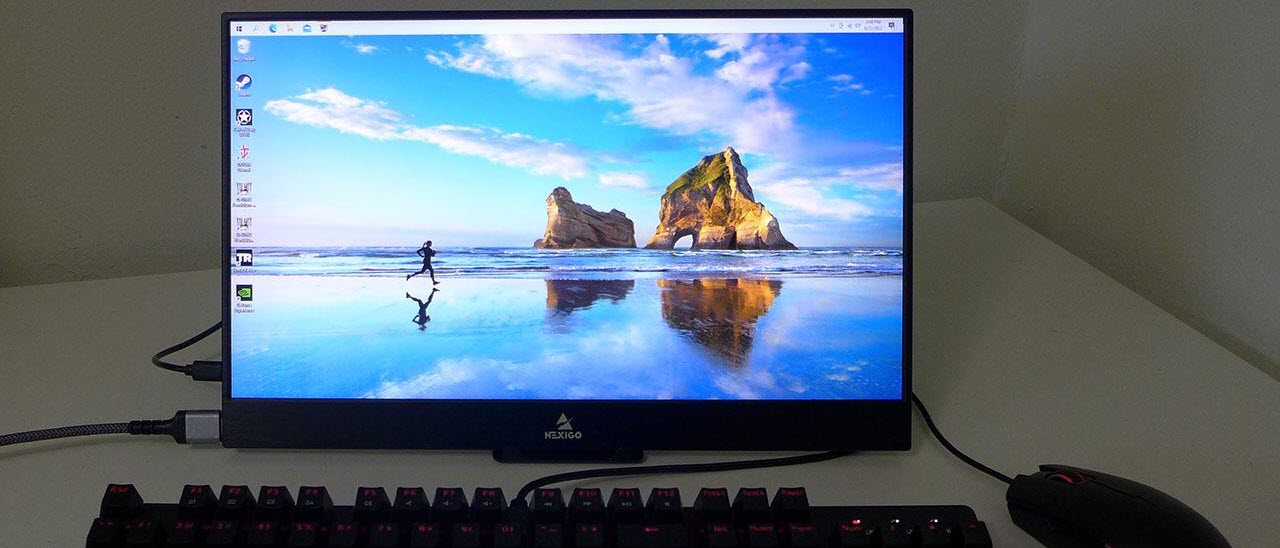
Specifications
Reasons to buy
Reasons to avoid
The Nexigo NG17FGQ is a 17.3-inch portable monitor that packs quite a punch. Not only is the large panel size something of a rarity in this space, but it also boasts a blazing-fast refresh rate of 300Hz with a USB-C cable using DisplayPort Alt-Mode. If you opt for an HDMI cable, the maximum refresh rate drops down to a still impressive 240Hz.
Gaming performance is solid, colors are plentiful and accurate, and build quality is impressive in this category. Other niceties include a remote for navigating the OSD and integrated speakers. across the board is excellent with the NG17FGQ, and it can produce some amazing colors once the panel is calibrated. Its overall good build quality also means that it should stand up to the rigors of being tossed around in a bag while traveling.
While the 300Hz refresh rate is the headlining feature of the NG17FGQ, be sure that you have a laptop GPU that is capable of pushing that performance at 1080p.
More: Nexigo NG17FGQ Review
What to Look for in a Best Monitor
- What’s your monitor’s purpose? If it’s gaming, you’ll generally want something with a high refresh rate (ideally 100Hz or more), low response time and AMD FreeSync or Nvidia G-Sync for fighting screen tears at low framerates. For general use, look for high contrast, and for creative work prioritize color accuracy.
- What resolution do you want? More pixels means a sharper image. No one should be buying anything under 1080p/FHD (1920 x 1080) these days. But if your budget can handle it, 4K is as sharp as it gets at a reasonable price. Many gamers find 1440p/QHD (2560 x 1440) a good compromise between price and high-refresh-rate performance.
- Contrast and color. We consider contrast the most important factor in image quality, with 1,000:1 being solid. Color errors are particularly important avoid for content creators, and anything with a Delta E (dE) greater than 3 may show visible errors.
- Panel tech: When it comes to image quality, TN < IPS < VA. VA monitors generally have better contrast than even the best IPS panels (3,000:1 and higher), although IPS panels are often more colorful.
- What size do you want? These days, 24-inches is on the small side and 27 inches is mainstream, while 32-inches is a good large size for those on a budget. Anything bigger than 43 inches probably won’t fit on a regular desktop. For portable monitors, stay in the 17-inch range or under. Anything bigger isn't really all that portable.
- sRGB or DCI-P3? In most cases, you’ll either be getting a monitor made for the sRGB color space or the more colorful DCI-P3 one. Technically, Windows, the web and non-HDR games and video all use sRGB, but if you want an extra colorful screen, an accurate DCI-P3 monitor is more appropriate.
Get Tom's Hardware's best news and in-depth reviews, straight to your inbox.

Christian Eberle is a Contributing Editor for Tom's Hardware US. He's a veteran reviewer of A/V equipment, specializing in monitors. Christian began his obsession with tech when he built his first PC in 1991, a 286 running DOS 3.0 at a blazing 12MHz. In 2006, he undertook training from the Imaging Science Foundation in video calibration and testing and thus started a passion for precise imaging that persists to this day. He is also a professional musician with a degree from the New England Conservatory as a classical bassoonist which he used to good effect as a performer with the West Point Army Band from 1987 to 2013. He enjoys watching movies and listening to high-end audio in his custom-built home theater and can be seen riding trails near his home on a race-ready ICE VTX recumbent trike. Christian enjoys the endless summer in Florida where he lives with his wife and Chihuahua and plays with orchestras around the state.
-
Sergei Tachenov What, no 24" monitors or 1080p (except compact ones)? Not even in the “best monitor for competitive gaming” category?Reply -
Endre ReplyAdmin said:We break down the best computer monitors for upgrading your setup in 2021.
Best Computer Monitors 2021 : Read more
I really like that list (especially the Asus ProArt 32” monitor).
I own a ViewSonic VP2768-4K, which is a very good monitor too. -
Soaptrail ReplySergei Tachenov said:What, no 24" monitors or 1080p (except compact ones)? Not even in the “best monitor for competitive gaming” category?
Also missing a best Ultra Wide choice. -
Soaptrail ReplyAZRainman said:You need to have separate categories for Freesync and G-Sync monitors.
Unless they do just Freesync since Nvidia supports both. -
Niglodonicus Yeah, this list is pretty thoroughly clueless. Samsung is notorious for making hypebeast garbage with terrible QC, and your #1 monitor is no exception. AND it's curved? How about a budget category?Reply -
stefanuyt Reply
same here..Sergei Tachenov said:What, no 24" monitors or 1080p (except compact ones)? Not even in the “best monitor for competitive gaming” category?
I work from home (I'm a programmer). I use 2 monitors (also at work).
What can I do with such big monitors? I now have two 22inch monitors. Looking to replace them...
But 32 inch??? Then I need to buy a new desk too :(
I guess 24inch in also good, but bigger is too big -
Sleepy_Hollowed Zero ultra wides? I know there only like two or three manufacturers offering those but yikes.Reply -
Co BIY I bought a 27" 16:10 recently for a programing station. It's a better ratio for productivity and deserves a spot too.Reply
32" is pretty big at first but once but once you have it you won't want to go back. (Just like 2 and then 3 screens!)
I feel like I can hardly work now with just one screen. Single screen and HDD on a work computer - the problems of the technologically spoiled. -
sammykhalifa Reply
No, they need a list that isn't just mostly about video games.AZRainman said:You need to have separate categories for Freesync and G-Sync monitors.

